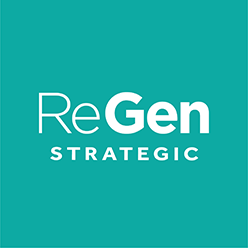In a digital landscape cluttered with social media platforms, there can be an inclination to focus too heavily on the benefits each platform possesses, while ignoring your strongest digital asset – the website.
While Facebook, Instagram, Twitter, and the like offer bespoke ways to communicate with an audience with pinpoint precision, this does not mean that attention should deviate from the humble website.
While websites can range from a simple landing page through to the complicated e-commerce face of an international brand, the same benefits of having a well thought out website apply.
Here are three key reasons why your website should be the backbone of your digital portfolio.
- Ultimate communication control
What primarily sets a website apart from any social media platform is the ability to say what you want, when you want, and for however long you want to. It might seem like a straightforward benefit, but I consider it the biggest of them all.
Websites are free of the constraints found on the most popular social media platforms, whether it be Twitter’s 280-character format, the ever-evolving Facebook algorithm, or Instagram’s inability to put URL links in post captions.
Websites also give you the freedom to shape your message in any manner you want, whether that be with text, imagery, video, URL links, gifs, or any combination of these.
An additional, and timely, example of how websites provide the ultimate communication control is that by owning your own channel, it is no longer up to a private corporation as to whether you can or cannot communicate something.
Take Facebook’s recent decision to delete the pages of all Australian businesses that deliver news, which had news organisations that had invested significantly in the platform scrambling to recover. This reliance underpins the complicated issue of multi-national companies overseeing your messaging.
- Catering to all demographics
One reason businesses select one social media platform over another is due to their ability to target certain demographics both organically and through paid advertising.
This is beneficial if your business model has a target market that consists of just one demographic. However, this decision does not take into consideration what might happen if your target audience is expanded to include, or changed to, a new demographic.
Facebook’s most popular demographic is the 18-29 age bracket, with Instagram most popular demographic being the 25-34 age range, while Twitter’s is 18–29-year olds.
This skew towards the youth is positive if your business intends to market to anybody under 40 years of age. However, with a population that is ageing, it must be questioned as to whether promoting on social media channels solely can truly reach all demographics.
In comparison, Google owns a near monopoly with a 94.4% share in the search engine market, touching upon all demographics. To put that into perspective, 1.3 million businesses in Australia made direct connections with customers through Google in 2019.
Taking this into consideration, having a website appear in a search engine cannot be overlooked at as the best and most consistent way to reach all demographics.
- Unlocking the power of Google Ads
Because of Google’s overwhelming search engine market share, focusing on ensuring your website appears in search engines also unlocks the opportunity to leverage Google’s biggest asset: Google Ads.
What is unique about Google Ads is that spending more money on an ad does not guarantee better results. Instead, ads depend on what is called the ‘relevancy score’ which includes the proposed budget, the website landing page experience and if the keywords the searcher is using are relevant to your ad copy.
What this means is that a Google ad will perform better if the ad copy matches what is displayed on the website landing page, while also containing keywords similar to those used as the search term.
By utilising Google Ads, you can not only review what keywords people are searching for and in what quantity, but also get real-time feedback as to whether what is displayed on your website matches what people are searching for. This provides the opportunity to consistently review your website copy in a way that makes it relevant and relatable to current consumer needs, in a way that is far more flexible than any social media platform.
While having a comprehensive digital portfolio across social media is a great way to ensure variety in messaging and creativity, it comes at a cost if the care and time has not been put into your website. In a world where new digital trends and platforms are constantly emerging, it makes sense to pay attention to the one platform that has stayed consistently strong throughout digital’s peaks and troughs.
 ReGen Strategic
ReGen Strategic